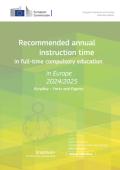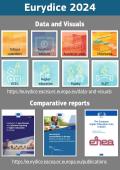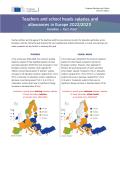The Structure of the European Education Systems 2017/18: Schematic Diagrams
Full version CNR DE EN ESFR HR IT LT RO SR TR
This report provides information on the structure of mainstream education in European countries from pre-primary to tertiary level for the 2017/18 school and academic year. It includes national schematic diagrams, an explanatory guide and a map showing the main organisational models of compulsory education. The information is available for 43 European education systems covering 38 countries participating in the EU's Erasmus+ programme.





